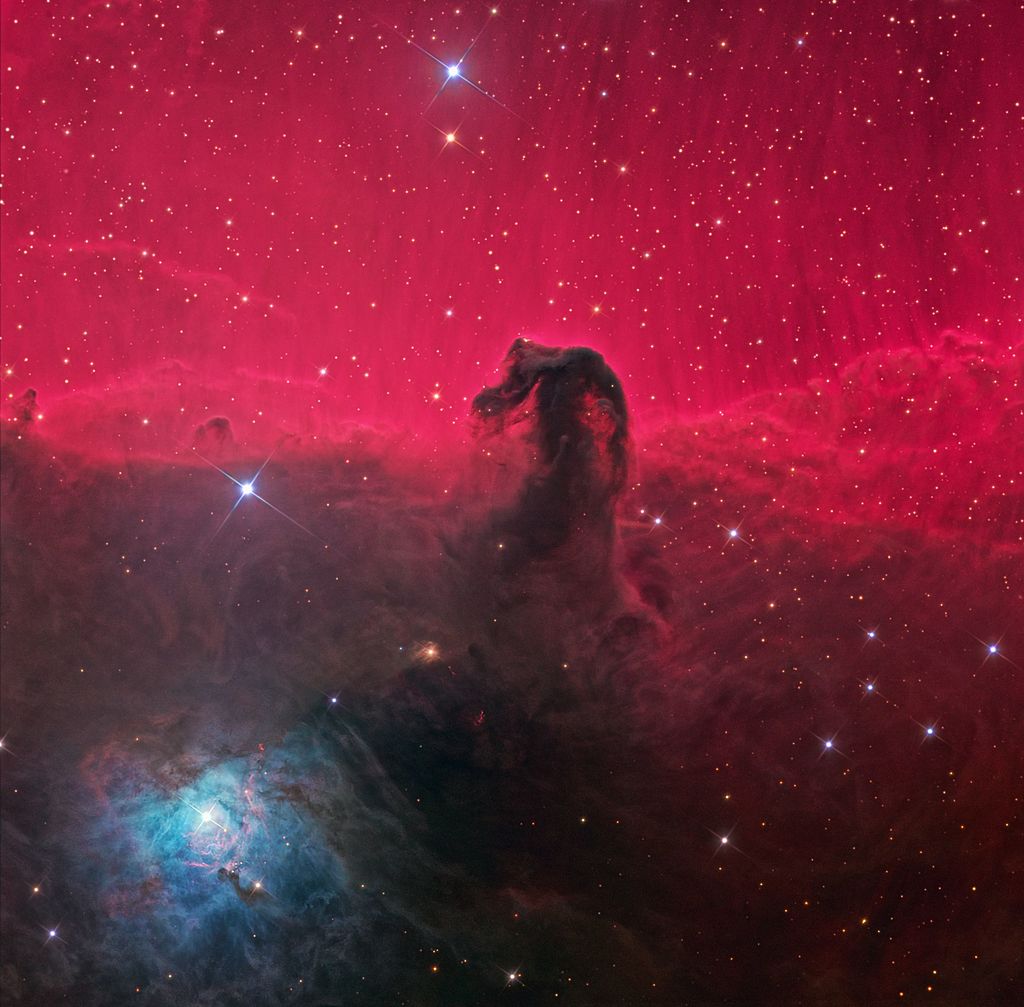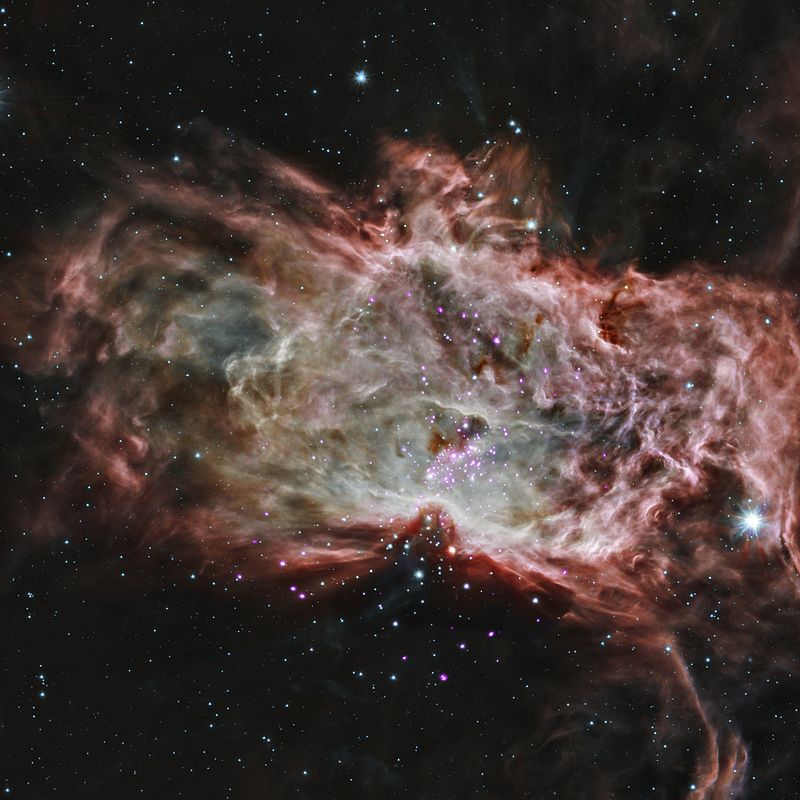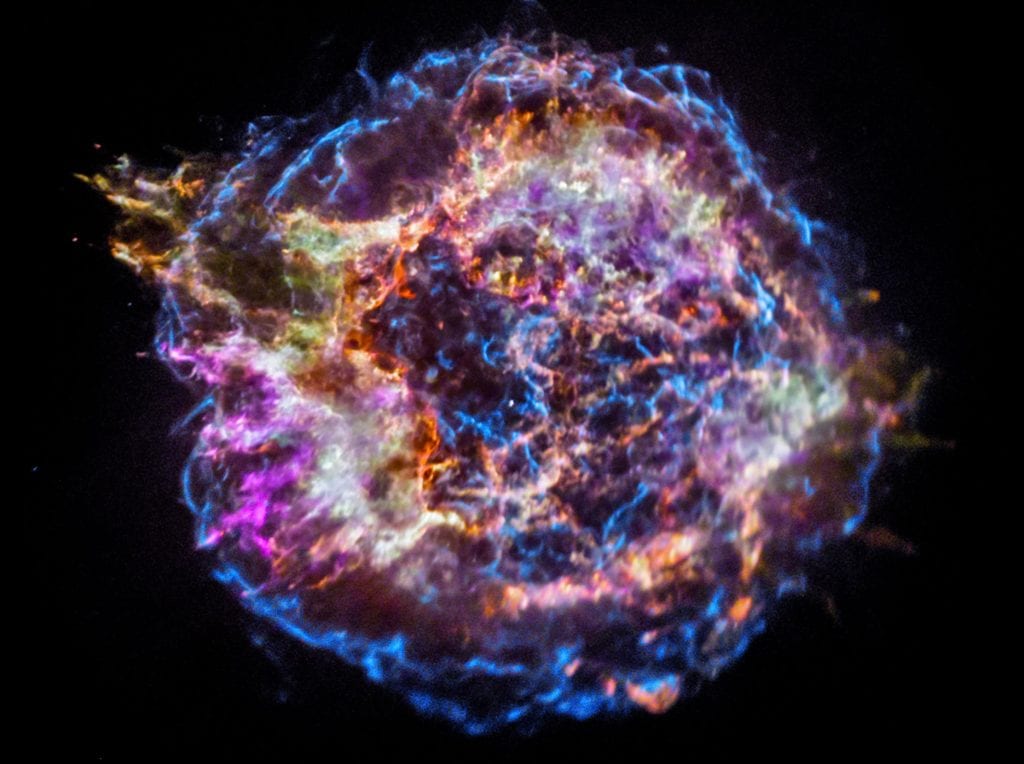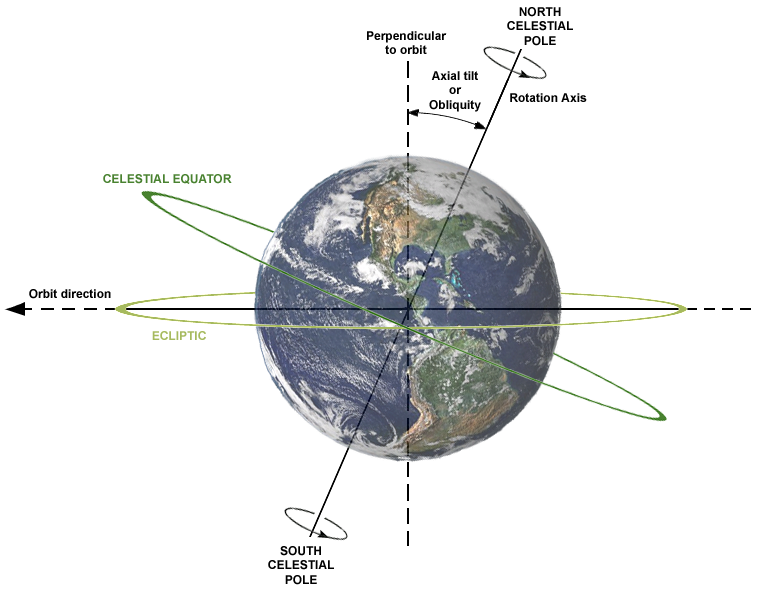What is a Star?
A star is an astronomical object, like a massive ball, that consists of hydrogen and helium, with enough mass to enable it to sustain nuclear fusion at its core. The best-known star is the Sun, which is the only star in our solar system. The luminosity of the Sun is measured as 1 on the standard luminosity scale and anything larger than 1 signifies that Star emits more energy than the Sun. Basically the more luminous a star is, the more energy it produces. For this post, the star we are interested in is the Alnitak star but before we get there, let’s look at a few things about stars in general.
Characteristics of a Star
There are 5 main characteristics that define a star:
- Brightness – luminosity and magnitude
- Mass – using the Sun as the benchmark
- Size – using the Sun as a benchmark
- Color – depends on the temperature of the star
- Surface temperature – measured on the Kelvin scale
Brightness
The brightness of a star is determined by two factors: Luminosity and Magnitude:
- Luminosity – is the amount of light that a star radiates as determined by its surface temperature and its size
- Magnitude – the magnitude factor measures the brightness of that star in two ways, by its ‘apparent magnitude’ and its absolute magnitude.
Apparent magnitude
The brightness measure, when both the distance and the size of that star are taken into consideration, is represented by the term ‘Apparent Magnitude’.
Absolute magnitude
Whereas, when the true brightness of a star is measured, irrespective of its distance from Earth, it is represented by the term ‘Absolute Magnitude’.
Mass
The mass of a star is measured against the mass of the Sun, where the Sun is measured as 1, and said to equal 1 solar mass.
FACT: Solar Mass is a standard unit of mass in astronomy, equal to approximately 2×10 (to the power of 30) kg. It is used as a measure for stars, nebulae, black holes and other solar masses of material.
A star that is two and a half times bigger than the mass of the Sun would be measured as having a mass of 2.5 solar masses.
The measure of mass also takes density into consideration.
Another well-known large star within the Constellation of Orion, ‘Rigel’, has a mass of 3.5 solar masses.
Size
Our Sun, and the planet of Jupiter are often used as a benchmark for measuring many objects in the solar system.
The size of a star is normally compared with the size of our Sun, so if a star was twice the size of our Sun it would be measured as 2 solar radii, and if it was the same size as the Sun it would be measured as 1 solar radii.
Stars that are similar in size may have a different mass measure as density has to be factored into the measurement of mass.
Color
The color of a star is determined by surface temperature.
From a young age we associate temperature with colors. The yellow Sun is hot and the deep blue water is cold.
However the opposite of what we are led to believe about this relationship between color and temperature applies with stars. We normally associate blue as an icy cold color and red as a hot color.
However with stars, the hotter stars have a cooler color and the cooler stars have a warmer color.
This means that a blue star would be hotter than a red star, with blue-white, white, yellow and red-orange stars, somewhere in between.
Surface temperature
The temperature of a star is measured on a scale known as the ‘Kelvin scale’.
On the Kelvin scale, zero degrees is theoretically absolute and equivalent to -273.15 degrees Celsius.
The approximate temperatures of stars by color range from:
- Hot Stars (Blue) – 50,000 K
- Alnitak Star (Blue-White) – 25,000K
- The Sun – 5,500 K
- Cooler Stars (Red)- 2,500K
So let’s take a look at one of the more notable Stars in our night sky – the Alnitak Star

The Alnitak Star– Facts in brief:
What is it?
Early in 1819, George K. Hunowsky, a German amateur astronomer identified the star known as Alnitak (an Arabic name), as a double star.
Alnitak is also referred to as a close binary star – comprising two stars, Alnitak Aa and Alnitak Ab.
- Alnitak Aa is the primary star and is a hot blue supergiant and the brightest Class O star in the sky. Based on its spectral type 09.5lB SB supergiant star, it is classified as a luminous blue-white supergiant star. This makes it one of the hottest stars in the universe.
- Alnitak Ab is a blue supergiant star with an apparent magnitude of 4.28 it is only 11 astronomical units from the primary Alnitak Aa star.
Recently another companion Star was found, known as Alnitak B, which is a class B star, it orbits the primary star every 1,508.6 years but is not visible by naked eye.
These three stars are now considered to be a triple star system, made up of Alnitak Aa, Alnitak Ab, and Alnitak B.
Characteristics
- Alnitak, this bright giant star is listed as the 33rd brightest star in the night sky and is visible by the naked eye.
- The latest estimate in 2007 for this blue supergiant star locates it around 736.26 light years from Earth (250.63 parsecs).
- It is a main star that ranks as the 5th brightest star within the Constellation Orion, according to the Hipparcos 2007 apparent magnitude list.
- Alnitak, is also referred to by other names such as, Zeta Orionis, 50 Orionis A, or Sao 132444. It is the easternmost star in the well-known asterism called ‘Orion’s Belt’.
- Alnitak is surrounded by IC 434, a bright emission Nebula, and located just North of the dark Horsehead Nebula and just South of the Flame Nebula.
What is a Nebula?
A Nebula is a massive cloud of gas and dust in Space.
Some Nebulae are formed when a star explodes and then dies, as is the case with a Supernova. Sometimes they can act as Star nurseries, which are the areas where new Star formation takes place.
Nebulae are the spaces in between the stars also referred to as interstellar space.
There are several types of Nebulae:
- Bright Nebulae, Emission Nebulae, Reflection Nebulae, Dark Nebulae, and Planetary Nebulae
FACT: a ‘reflection nebula’ is an interstellar cloud that should be a dark nebula (a molecular cloud) however its interstellar dust reflects light from a nearby bright star and it reflects the light, hence the name.
The Horsehead Nebula

The Horsehead Nebula (NGC 2023) is in Constellation Orion and is located south of the Alnitak Star. This is one of the best-known and most recognizable nebulas in the night sky.
It gets its name from a small dark patch within this nebula that looks like a horse’s head and it is also referred to as a dark nebula.
The Horsehead Nebula is located around 1,500 light years from Earth
The Flame Nebula

The Flame Nebula (NGC 2024 or Sh2-277), is an emission nebula that is part of the Orion Molecular Cloud Complex, a star forming region. Alnitak shines ultraviolet light into the flame, which pushes electrons away from the clouds of hydrogen gas in this nebula.
This creates a glow, or the flame, hence the name. It is 1,350 light years from Earth, with an apparent magnitude of 10.
How was it named?
Johann Bayer

In 1603, The German Astronomer – Johann Bayer, systematically assigned names to the brightest stars in each constellation and cataloged them in his Star atlas – ‘Uranometria Omnium Asterismorum’.
The Bayer designations are stellar designations where the stars within Constellations such as the Constellation Orion are initially identified by a name or a letter from the Greek Alphabet from Alpha through Omega (in order of brightness).
1. The names of the Stars begin with a letter of the Greek alphabet starting with– Alpha, then beta, gamma, etc.
2. Followed by the genitive form of their parent constellation’s Latin name – ‘Orionis’, sometimes abbreviated to ‘Ori’
3. Normally the first Star is named Alpha Orionis, however in Orion the brightest Star is the Beta named Star.
The mainstars of Orion are named by their apparent magnitude (luminosity) from the brightest to faintest star in decreasing order:
1. Rigel, Beta Orionis, Beta Ori – brightest star with a visual/apparent magnitude of 0.18
2. Betelgeuse, Alpha Orionis, Alpha Ori – second brightest Star with a visual/apparent magnitude of 0.42
3. Bellatrix, Gamma Orionis, Gamma Ori – the third brightest star with a variable magnitude of around 1.6
4. Alnilam, Epsilon Orionis, Epsilon Ori – the fourth brightest star with an apparent magnitude of 1.69
5. Alnitak A, Zeta Orionis, Zeta Ori – the fifth brightest Star, in Constellation Orion, with an apparent magnitude of -1.77
Alnitak is a triple star system, including:
- The Alnitak Aa Star – visual magnitude of +2.0, and the brightest Class O Star in the night sky. second magnitude
- Alnitak Ab – visual magnitude of 4.28, fourth magnitude
- Alnitak B – visual magnitude of 3.70-4.00, fourth magnitude
The combined magnitude of the three stars in the Alnitak triple Star System is +1.77.
These Stars are members of the Orion OB1 Association, which is a stellar association for stars of the spectral types O and B, and a part of the Orion Molecular Cloud.
Properties of the Alnitak Star
The Alnitak Star is an extremely luminous and massive star and the 5th brightest star in the Constellation Orion.
The 5 brightest main stars in the Constellation Orion are:
- Betelgeuse (Alpha Orionis),
- Rigel (Beta Orionis)
- Bellatrix (Gamma Orionis)
- Alnilam (Epsilon Orionis)
- Alnitak (Zeta Orionis)
Alnitak is located –
- South-central of the Constellation Orion
- Southwest of Betelgeuse
- Northeast of Rigel
- Southeast of the neighboring belt stars – Mintaka and Alnilam
- North west of Saiph (Kappa Orionis)
Mass
The mass of the Alnitak Star is uncertain.
Radius
Alnitak Star was originally thought to have a radius of 8.46 times that of the Sun (written as 8.46 R), but this was revised to 7.61 R in 2007.
If the radius of the Sun were 695,800km, then the radius of this supergiant star, Alnitak would be around 5,888,598.14km.
How bright is this Alnitak Star
The Alnitak Star is a blue-white supergiant star (c LBV) and is estimated to be the 33rd most luminous star of all the known stars.
Its luminosity is the amount of energy emission from this giant star relative to the Sun.
It is measured as having a luminosity of 78,179.80 times brighter than the Sun, and regarded as the brightest class O Star in the night sky.
The brightness of a star as seen from earth is measured by its magnitude of which there are three classifications: Apparent Magnitude, Visual Magnitude and Absolute Magnitude.
The measurements for the brightness of the Alnitak Star are:
- An apparent magnitude of +1.74 (also referred to as its visual magnitude)
- An absolute magnitude of -5.3
FACT: The Apparent Magnitude is how bright we see a Star from Earth, and the Absolute Magnitude is the Apparent Magnitude of that star from a 10 parsecs distance (32.6 light years), assuming there are no molecular clouds, or dust in the line of sight.
The lower the number of magnitude the brighter the Star.
The color of the Alnitak Star
The Alnitak Star is classified as a luminous Blue Variable type of Star (LBV), which according to the spectral type of this star, 09.5lb SB, classifies it as a blue-white supergiant colored Star. It is a class O Star.
The temperature of this blue supergiant
Based on the spectral type of this Star it is estimated to be at least 25,000 degrees Kelvin. This makes it one of the hottest Stars identified so far in the Universe.
Where is Alnitak Star located? –
According to the revised Hipparcos date published in 2007, the Alnitak Star is estimated to be around 736.26 light years (225.73 parsecs) from Earth.
The distance between the Earth and the Sun is known as an Astronomical Unit. The figure of A.U. is calculated as the number of times that Star is from Earth, in comparison with the Sun.
It is located approximately 25,075.44 light years from the Galactic Center, the center of the galaxy we call the Milky Way.
The Galacto-Centric distance is measured as the distance from that Star to the center of the Galaxy (Sagittarius A).
Fact: the Galactic Center, or Galactic Centre, is a supermassive black hole and the rotational center of our Milky Way galaxy. It is not possible to view it at visible, ultraviolet, or even soft or low-energy X-ray wavelengths because of the molecular clouds of interstellar dust along its line of sight.
The Alnitak Star is of great interest to amateur astronomers as it forms part of the famous Orion’s Belt and has been captured in detail showing the neighboring nebulae, the dark Horsehead Nebula and the Flame Nebula by the NASA Hubble Space Telescope.
Where can the Alnitak Star be seen?
The Alnitak Star is one of the 5 main Stars in the outline of the Constellation Orion and is visible by the naked eye.
Alnitak, Mintaka and Alnilam (named from the Arabic language) are the three Stars that make up the well-known asterism in the Constellation Orion – ‘Orion’s belt.’
Orion’s belt is also known as the Belt of Orion, the Three Kings and the Three Sisters.
Finding Orion’s Belt stars is the easiest way to spot the Constellation Orion and Alnitak, the bright star within the outline.
Co-ordinates of a right ascension, or left ascension and their declination are used to locate all of the notable objects in the sky
The Alnitak Star lies at a 05hours 40 minute right ascension, and a declination of -01.56 degrees.
The right ascension – is the angular distance of any sky object along the celestial equator from the March (Spring) equinox.
- If it has a negative number it is west of the March equinox.
The declination – is the angle of the sky object from the celestial equator.
- If it has a negative number it indicates it is located in the southern hemisphere
How was the Alnitak Star formed, found and named?
The Alnitak Star is a blue supergiant star that is part of the Constellation of Orion and also known as Zeta Orionis or 50 Orionis A.
The proper name for this star, Alnitak, is derived from the Arabic ‘Al Nitak’, meaning ‘the Belt’ or “the girdle” of Orion.
The age of the Alnitak Star
It is not certain what age the Alnitak Star is or how long it is likely to continue to survive. One estimate of the age of this Star, assuming it was formed around the same time as neighboring Saiph, Rigel and Meissa, is around 6-10 million years.
How can you identify the Alnitak Star?
The simplest method for spotting any Star from Earth is to first of all locate an easy to recognize near by Constellation or object in the night sky.
The Constellation Orion would be a good starting location for finding the Alnitak Star, as it is one of the stars in Orion’s belt.
The types of Stars
There are many different types of Stars in the star system categorized by size, lifespan and luminosity.
Generally, larger Stars have a shorter lifespan.
Stars are formed from clouds of interstellar gas and include:
Red Dwarf Stars
Most of the stars in the galaxy are Dwarf Stars, and most of those are Red Dwarf Stars. They are small in size measuring about 40-50% of the mass of The Sun. They are cool and their luminosity has only about 10% of the brightness of the Sun (our brightest Star), and they live for longer.
Brown Dwarf Stars
These are known as failed stars that form like other stars but don’t reach the mass, heat or density to begin the nuclear fusion process. They are only about 8% of the mass of the Sun and are red not brown, and not easy to spot in the night sky.
Red Giant Stars
These are giant luminous stars that have a low or medium mass. A Red Giant Star is formed when a star expands its volume by fusing all of its hydrogen into helium, and then burning the helium to produce carbon and oxygen to expand.
Blue Giants
These are giant, bright stars that range from 10-100 times the size of the Sun and are 1000 times brighter. They are big and hot and therefore burn out quickly. The biggest are called Blue super giants or hyper giants. The biggest ever discovered was about 10 million times brighter than the Sun,
Yellow Dwarfs
These are main-sequence stars like the Sun, but only 80% of its size, and are bright stars,
White Dwarfs
These are small burnt out husks of stars, about the same size as the Earth. White Dwarfs are dense and represent the final state of evolution for a star, like most stars in the galaxy.
Black Dwarfs
These are the remains of a White Dwarf after it cools and darkens. This is likely to happen after about 10 billion years of life.
White Stars
These are also main-sequence stars like the Sun, but twice the size, and are bright stars and hot.
Other types of stars include the Orange Giant, Neutron stars, Variable Stars, Binary Stars and close Binary Stars.
Deep Sky Objects
FACT: A Deep Sky Object is an astronomical object, that is not a solar system object like the Sun, Moon, Comet or a Planet.
Individual Stars, such as Alnitak, Mintaka and Alnilam are not considered to be Deep Sky Objects.
Deep Sky Objects are faint objects that can sometimes still be observed by the naked eye in the night sky from Earth, but are often best viewed through quality telescopes for deep space objects.
Deep Sky Objects include Galaxies, Star Clusters and Nebulae.
- Star clusters – such as Globular Clusters of Stars or Open Clusters of Stars
- Dark Nebula, Planetary Nebula, Diffuse Nebula, and Supernova remnants
- Galaxy Groups, Galaxies, Spiral Galaxies, Gravitational Lenses and Quasars
How do we obtain the images of Stars from Space?
Images of the different Stars and nebulae have been captured using a professional large telescope, such as the NASA Spitzer Space Telescope, with a near infrared camera and multi-object spectrometer.
Supernova Remnants

A supernova remnant is the structure that’s left after a star explodes in a supernova.
There are 3 types of supernova remnants: shell-like, composite and mixed-morphology (or thermal composite).
The life of many Stars ends in a supernova explosion
The celestial pole

The celestial pole defines the poles of the celestial equatorial coordinate system.
An object at the Celestial pole has a declination of 0 degrees.
- The declinations for the north celestial pole is +90 degrees
- The declinations for the south celestial pole is -90 degrees
Celestial poles are not permanently in a fixed position against the background of the stars as everything moves in Space.
The Alnitak Star is located in the Southern celestial sky at a -01,56 degrees declination, and an average 05 hours, 40min right ascension.
Fun Facts about Stars – Did you know that?
- The rate of formation of stars in a starburst galaxy is more than 10 times faster than the star formation in the Milky Way galaxy
- The planet Jupiter is often cited when making size comparisons between planets or stars. The Jupiter mass is a unit of mass equal to the total mass of planet Jupiter
- The Star we call The Sun does not belong to any constellation.
- The center of a Galaxy does not contain a Giant Star it contains a Supermassive Black Hole.
- A Red Dwarf is not a Dwarf Planet it is a Star. Most common Stars are Red Dwarf (cool Stars)
Commonly Asked Questions
Q. What prevents us seeing the Stars in the night sky?
A. From Earth, light pollution, fog, city lights and artificial lights all limit our visibility of the objects in the sky at night. From the sky it is likely to be molecular clouds and dust.
Q. Will the locations of Stars change over time?
A. Stars are continually on the move.
The images we form in our mind to make objects, shapes and patterns out of the constellations have already shifted over time. As we view the night skies from Earth they are likely to continue to shift and possibly in time the images may look very different. As stars and galaxies are in constant motion, it is inevitable really.
SOURCES:
- Alnitak – Claustonberry Observatory – https://www.astronomytrek.com/star-facts-alnitak
- Horsehead Nebula – By Ken Crawford, CC BY-SA 3.0, https://commons.wikimedia.org/w/index.php?curid=31584618
- Flame Nebula – By X-ray: NASA/CXC/PSU/K.Getman, E.Feigelson, M.Kuhn & the MYStIX team – http://www.nasa.gov/mission_pages/chandra/multimedia/flame-nebula.html (image link)
- Supernova Remnant – Cassiopeia A. Credit: NASA/CXC/SAO – https://scitechdaily.com/lonely-origin-of-cassiopeia-a-revealed-one-of-the-most-famous-supernova-remnants
- Celestial Pole – By I, Dennis Nilsson, CC BY 3.0, https://commons.wikimedia.org/w/index.php?curid=3262268
- Johann Bayer – https://laexuberanciadehades.files.wordpress.com/2012/10/johann-bayer.jpg